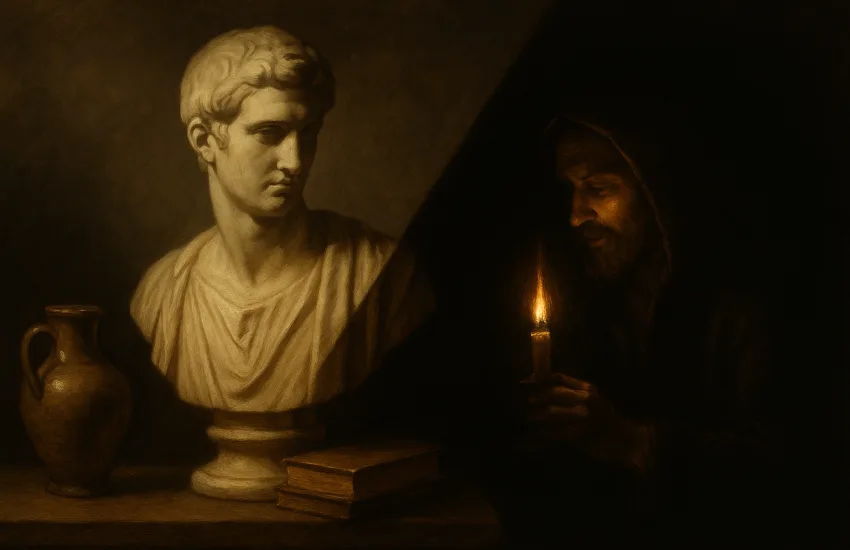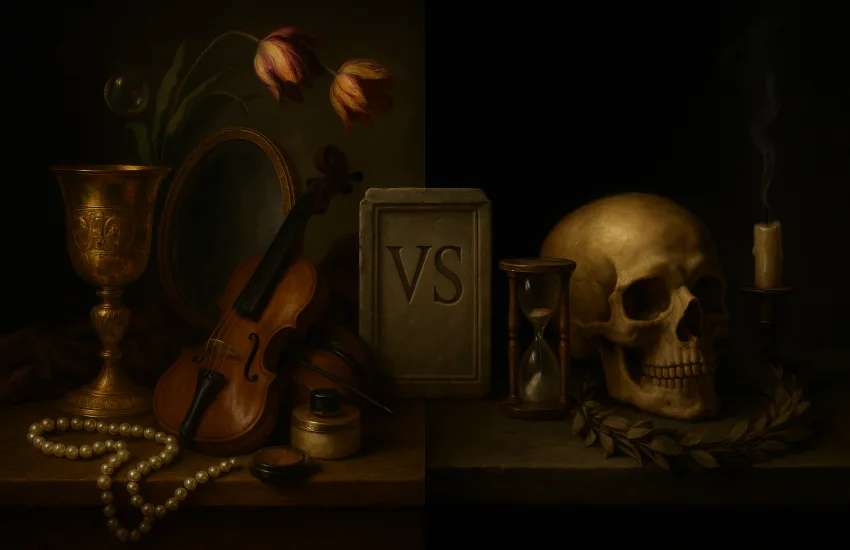Painter who creates his own style between Classical and Modern: Renoir-Impressionism and Refusal
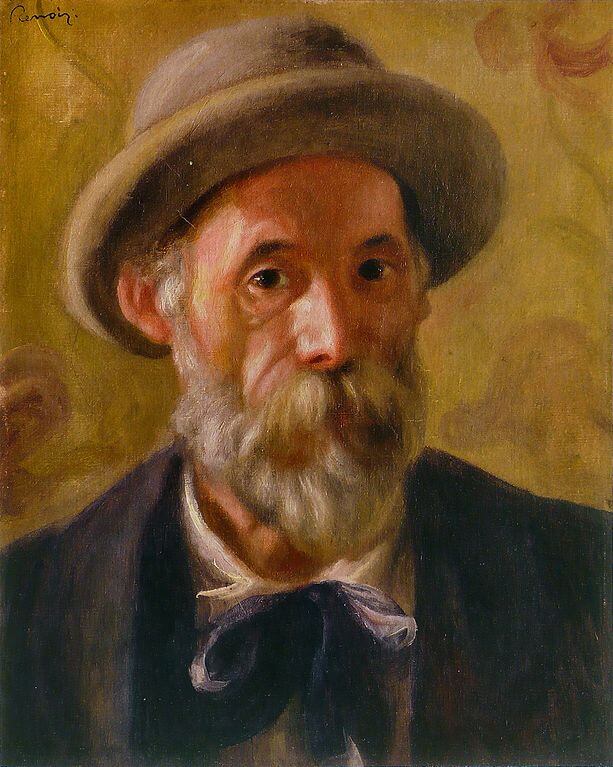
Pierre-August Renoir was born in France in 1841. Noticing his talent at a young age, his family gave him to a porcelain painting workshop. He made floral decorations on Chinese porcelain. He gained experience in light and bright colors [1]. Renoir, who was very successful here, got tired of the monotony over time and started visiting the galleries of the Louvre frequently [2]. He wanted to get a more formal art education and started preparing to enter the Ecole des Beaux Arts (Academy of Fine Arts), the most important institution of the period in Paris. In 1862, he was continuing his education at the Academy while working in the workshop of the Swiss painter Charles Gleyre [3]. Gleyre was one of the 19th century neoclassical painters who adopted the traditional approach of the academy. Although Renoir did not share the same understanding, he continued to work with him for his basic education [3]. There he met his friends Alfred Sisley, Frederic Bazille and Claude Monet, with whom he would later lead the movement of impressionism [2]. While they were totally against classical painting, Renoir approached a little more moderately, especially studying the works of great masters [1].
Influences: Romanticism and Realism
Renoir, like all the other impressionists in his early years, “I paint what I see, not what others want to see.” He was modeled on Edouard Manet’s (1832-1883) style, who defied popular perceptions [3]. He was also influenced by the way romantic painter Eugène Delacroix (1798-1863) uses colors and his work on the optical effects of colors. On the contrary, he placed more emphasis on this color approach on the words of his teacher, who warned him in the academy that “there is no new Delacroix” when he used a strong red. [4]. Another artist whose ideas he valued was Gustave Courbet (1819-1877), who was considered the pioneer of realism. Courbet refused to paint the ornate and exaggerated compositions of romance, and transferred real people from society to the canvas in their real environment [5]. Renoir did not adhere to any style, but created his own unique style with a link between pre-impressionism and the classical movement. [2.6]
Years spent with the impressionists
Renoir lived a financially difficult life during his years at the academy. Together with Monet, who was struggling to make a living, they were painting by the Seine river in Paris, where impressionism was born. The pictures they drew and the way they used the brush were quite similar [1].


His friend Frederic Bazille, who studied medicine at the time and came to Gleyre’s workshop in his spare time, came from a wealthy family. He often helped Monet and Renoir with money and even shared a workshop he rented with them [4]. After failing the medical exams, Bazille returned to Paris in the spring of 1864, and his workshop became the meeting point of avant-garde artists after Cafe Guerbois (the meeting point of the impressionists) [4].
In those years, art students often went to the Fontainebleau forest near Paris. They used the landscape sketches they drew in the forest as the background for their paintings. However, especially Renoir’s impressionist friends focused on the understanding of ‘en plein air’ (painting in the open air), which started with the idea of transferring these landscapes to the canvas as a painting in itself. Although Renoir did not fully adopt this idea, he joined his friends [4]. Although he also made landscape paintings, when compared with his friends, human depictions are predominant in his career [1].
Although Renoir liked to use colors, he used a tar paint to create dark shades in his early paintings. When he went to the Fontainebleau forest, he met the long-time Barbizon School painters. These painters, including Gustave Courbet, whom he took as an example, advised Renoir not to use dark colors. Looking at Renoir’s late paintings, soft, bright vivid colors are seen [4].

“… one morning we were out of black and used dark blue instead, and that moment impressionism was born.”
It achieved its first significant success in 1864. The Academy, which was the authority of the period and strange new methods of the Impressionists, accepted his work “La Esmeralda” inspired by Victor Hugo’s work Notre Dame de Paris to the Salon exhibition of that year [1,2].
In the first years of his birth, impressionism lacked the support of art circles, and Renoir was also unable to sell his works. Over time, impressionism began to grow and be appreciated. Renoir, who joined the war in 1870 when the German-French war broke out, fell ill and returned to the country. He continued painting where he left off [2].
In 1874, Renoir’s works began to receive the attention they deserved. In the same year, names such as Monet, Pissarro, Cezanne and Degas organized the first independent impressionist exhibition. 6 works of Renoir were also exhibited [6].
His most well-known masterpieces belonging to the Impressionist period are his works such as Lodge (1874), Dance in Le Moulin de la Galette (1876), Madame Charpentier and His Children (1878) [3]. Especially at Le Moulin de la Galette, Dans is perhaps the pinnacle of Renoir’s mastery of light and shadow. As in other impressionist works, it does not make much sense when looking closely at Renoir’s works, after a certain distance the painting is understood as a whole. Even though he developed a style that is free and free from shape concern like others, he did not completely give up on classical arrangements; In details such as skin, facial features and clothes, he worked within more specific limits [4].
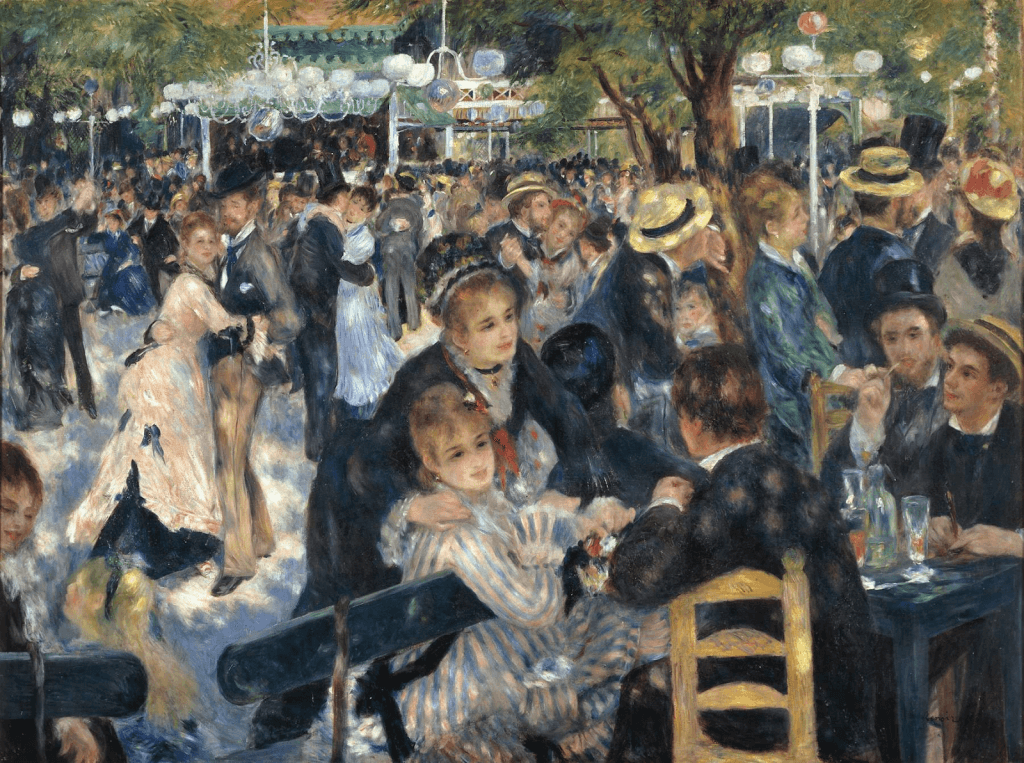


Trip to Italy and rejection of impressionism
Renoir, whose financial situation improved, wanted to get away from Paris for a while. In 1881 he went on a trip to Algeria and Italy. Here he was fascinated by the works of masters such as Michelangelo, Titian, Raphael and Bernini. This journey was the beginning of a serious change in Renoir’s style and view of life [4]. He declared that he did not accept the revolutionary role assigned to the impressionists when he returned to Paris for fear of losing the success he had hardly achieved until then. He said that impressionism had “taken him as far as he could.” He wanted to discover new methods and therefore he was not satisfied with his works. At that time, he witnessed Cezanne’s efforts to try to develop a new language of painting, and he made sure that impressionism was taking him in the wrong direction [4]. Unlike the impressionists who focused on landscape paintings, Renoir focused on figures and portraits throughout his career. He said [4].
Renoir, who never gave up his admiration for classical painting, focused on this idea after his trip to Italy and even said that “there is nothing but the classic”. However, Renoir lost his support during this new process, his works were not liked and he was again unable to sell his paintings. After he started to live in the bright environment of Southern France, where he went to get away from Paris, his interest in classicism decreased again [3].
In this way, he distanced himself from the currents and especially painted nude human figures and various natural home scenes [3].





In this period when he was obsessed with artificial perfection, it was falling that French art lost its magic and imagination. For this reason, he started to establish a community called “Irregulars” with like-minded people. He wrote his manifesto “Grammar of Art”. However, these efforts could not achieve a significant result [4].
He continued to participate in various exhibitions in the following years. However, he could not find exactly what he was looking for in his art and became dissatisfied. He married Aline Chargot in 1890 [3].
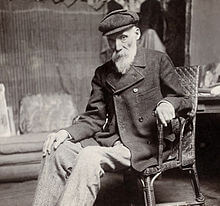
He was weakened by his joint rheumatism in 1892. But he never gave up his passion for painting. Although he could not even move his hands and shoulders in his last years, he drew with the brush someone attached to his hand. He also worked on sculpture in this last period. Just before his death in 1919, he again visited the Louvre to see the masterpieces of the masters [2]. He died in peace after seeing his works hanging next to those of the masters he admired when he was young [3].
Kaynaklar
1. https://turkishpaintings.com/index.php?p=59&l=1&modPainters_artistDetailID=388
2. https://en.wikipedia.org/wiki/Pierre-Auguste_Renoir
3. Grzymkowski, Eric. Sanat 101. İstanbul: Say Yayınları, 2015.
4. Hodge, Susie. Renoir 500 Görsel Eşliğinde Yaşamı Ve Eserleri. İstanbul: İş Bankası Kültür Yayınları, 2020.
5. https://www.oggusto.com/sanat/sanatci/gustave-courbet-hayati-eserleri-ve-bilinmeyenleri
6. https://surovekgallery.com/pierre-auguste-renoir

